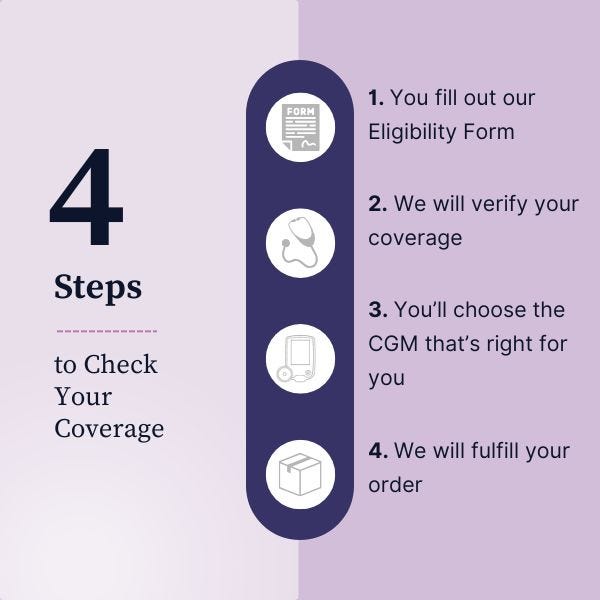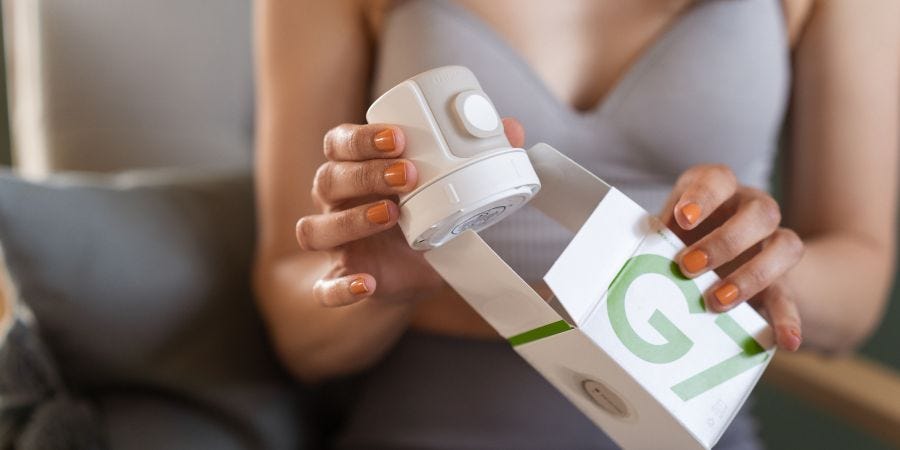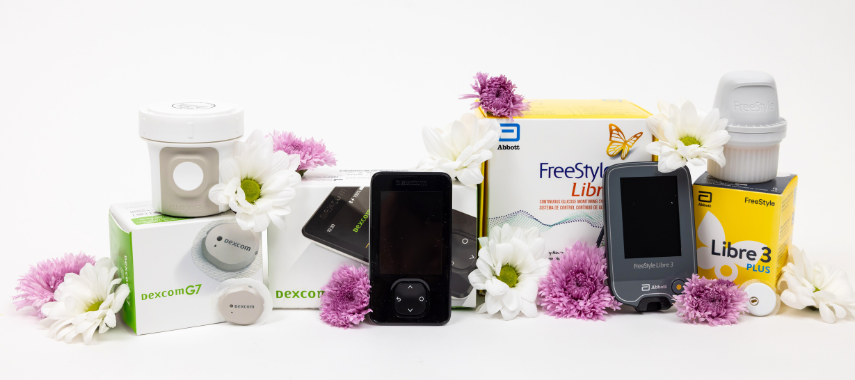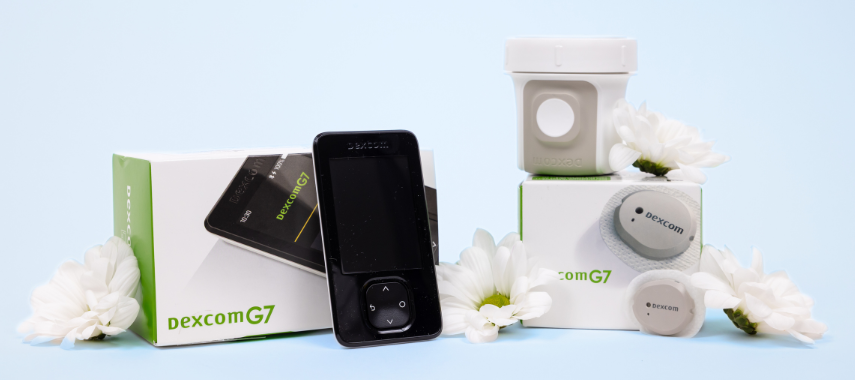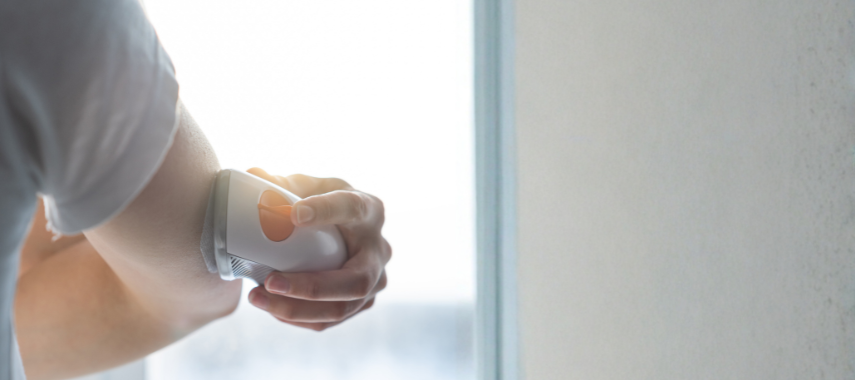Key Takeaways:
- Using a CGM sensor beyond its recommended wear time is not recommended, as they expire and cannot be restarted.
-
Common indicators that your sensor needs to be replaced include end-of-wear alerts, adhesive failure, or skin irritation.
-
Freestyle Libre 2 and 3 sensors last 14 days, while Dexcom G6 and G7 sensors last 10 days. New 15-day sensor versions for both brands are becoming available in 2025.
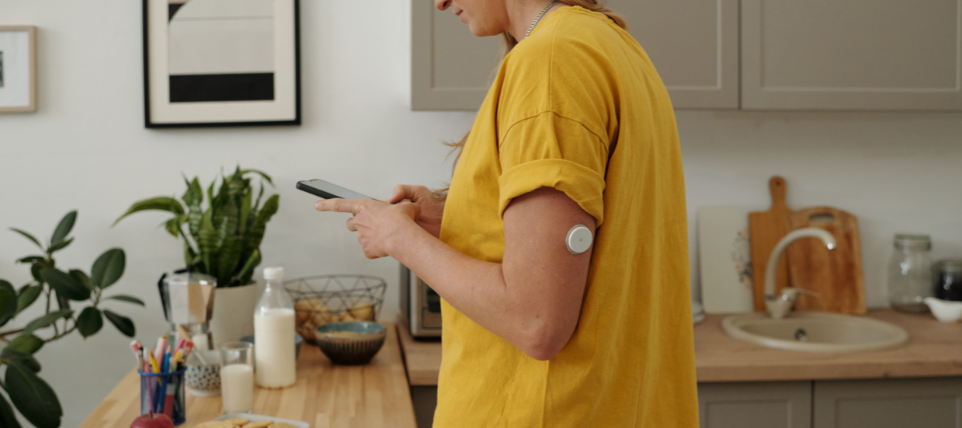
A Continuous Glucose Monitor (CGM) is a sensor-based device that provides real-time glucose readings day and night without requiring fingersticks.
A small sensor is placed just under the skin to collect glucose data. The sensor is attached to a transmitter on top of the skin, which transmits the collected glucose data to the dedicated reader (if Libre) or receiver (if Dexcom) or to a smartphone app.
What Is a CGM Sensor?
A CGM sensor is a small device and an important tool for diabetes care. It is used to monitor glucose levels continuously throughout the day and night. The sensor is typically worn on the skin, often on the abdomen or upper arm, and measures the glucose levels in the interstitial fluid just below the skin.
How Long Do CGM Sensors Last?
The lifespan of a CGM sensor typically ranges between 7 to 14 days, depending on the specific brand and model.
-
Freestyle Libre 2 System Sensor Lifespan: 14 days.
-
Freestyle Libre 3 System Sensor Lifespan: 14 days.
-
Dexcom G6 Sensor Lifespan: 10 days.
-
Dexcom G7 Sensor Lifespan: 10 days.
-
Freestyle Libre 2 Plus Lifespan: 15 days.
-
Freestyle Libre 3 Plus Lifespan: 15 days.
Check your coverage for continuous glucose monitoring supplies through your insurance now!
Check your coverage for continuous glucose monitoring supplies through your insurance now!
How Often Should a CGM Be Replaced?
- Dexcom: Dexcom sensors last 10 days (all insurance-covered models), so they need to be replaced three times a month. Dexcom has released an OTC sensor called Stelo that lasts for 15 days and requires no prescription, but it is not approved to be used for the management of insulin-controlled diabetes. A 15-day version of the Dexcom G7 has just been approved by the FDA and should be released later this year. It will work with the current Dexcom G7 receiver.
- FreeStyle Libre Systems: Freestyle Libre 2 and Libre 3 CGM system sensors last 14 days at present. There are 15-day wear versions on the market now, the Freestyle Libre 2 Plus and Libre 3 Plus, and Abbott will be phasing out the 14-day wear sensors and transitioning everyone over to the 15-day sensors by September 2025. Both Libre 2 Plus and Libre 3 Plus will work with their current respective readers.
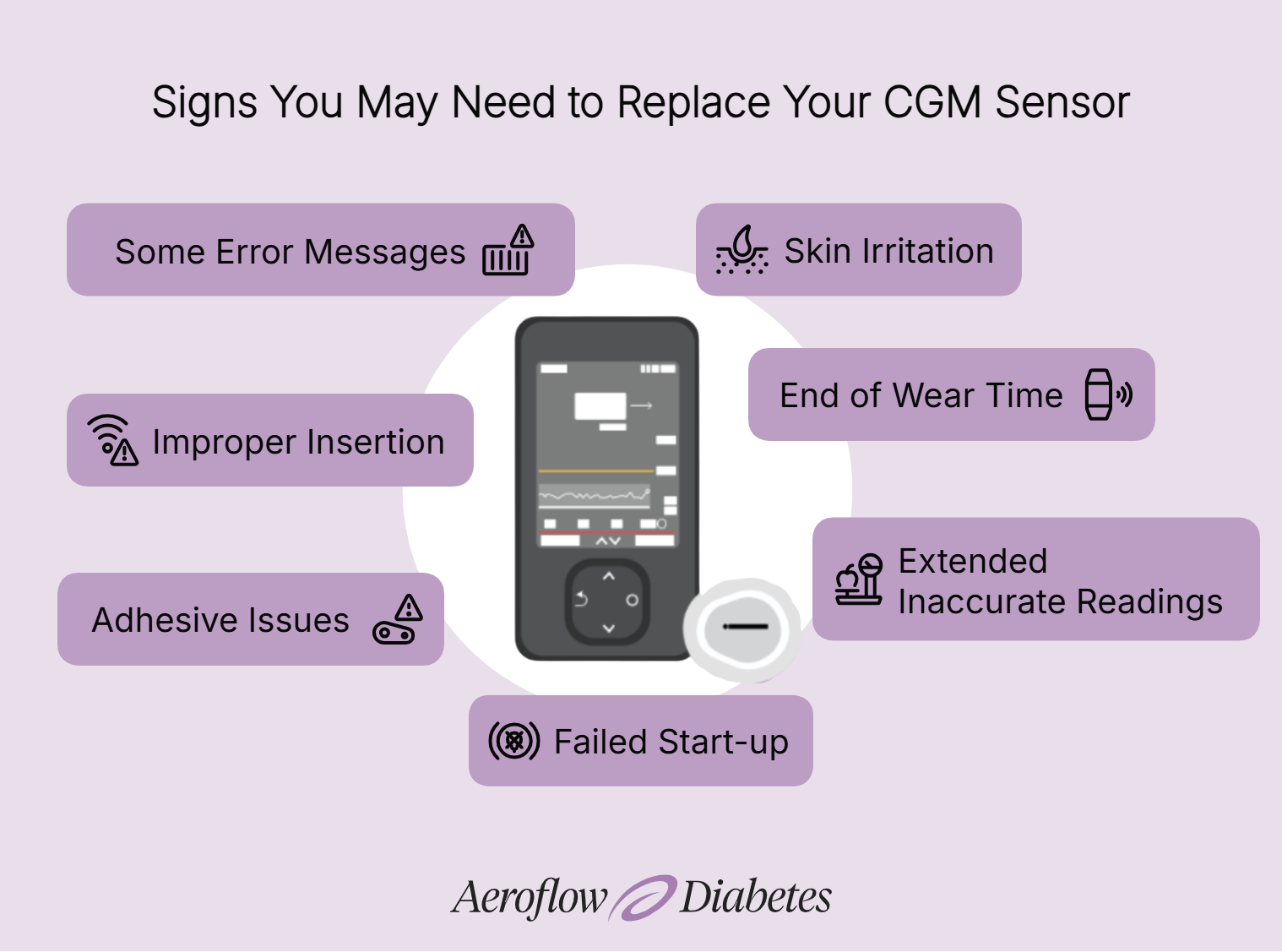

Do I Need to Replace My CGM Sensor Early?
There may be occasions when you would need to replace your sensor early. Certain factors, such as medications, vitamins, and supplements, can affect the properties of your interstitial fluid, which is what the sensor uses to measure glucose levels.
These changes may lead to extended signal loss, unstable readings or sensor failure and could mean you need to replace your sensor early. However, changes to interstitial fluid don't occur in all cases, so it's important to consult with your healthcare provider before making any changes to your routine.
Technical Issues
There are often occurrences that you may feel are a sign that a sensor should be replaced, but in many instances, troubleshooting protocols should be employed before removing and replacing a CGM sensor.
Inaccurate Readings
Inaccurate results are a minefield of misunderstanding. It’s important to learn exactly how a CGM works, learn to correctly read the data coming from the sensor, and take all information into account before believing it to be inaccurate. Sensors use interstitial fluid to get glucose data, not blood, so it isn't easy to compare the two.
Interstitial fluid is slower to react to changes in glucose than a fingerstick. Factors like what direction and speed glucose is traveling (check the trend arrow), what you have been eating and drinking, if you have been exercising, using insulin or medications, laying down and resting, sitting in the hot sun, or how long the sensor has been worn, all play a part in widening the difference between a fingerstick and a sensor reading.
Aeroflow Diabetes Disclaimer
Information provided on the Aeroflow Diabetes website is not intended as a substitute for medical advice or care from a healthcare professional. Aeroflow recommends consulting your healthcare provider if you are experiencing medical issues relating to diabetes care.



